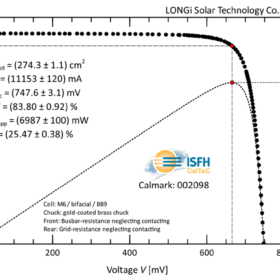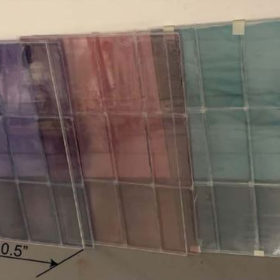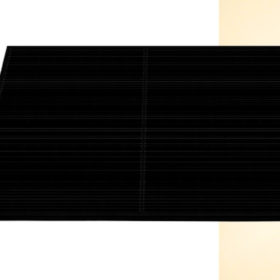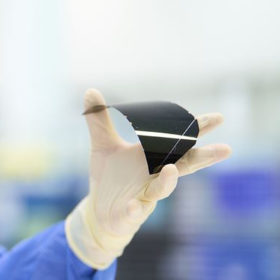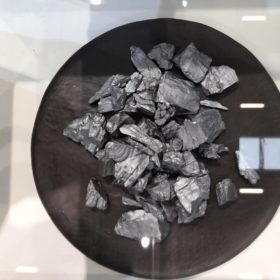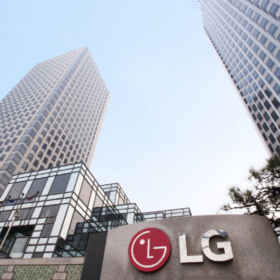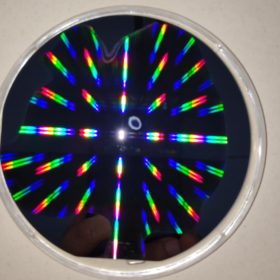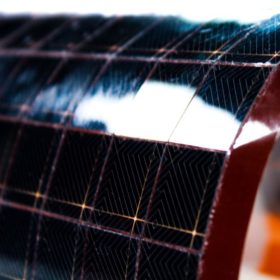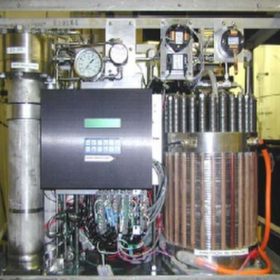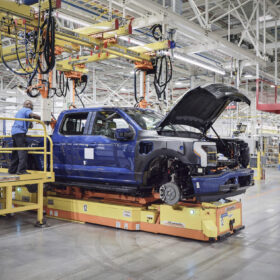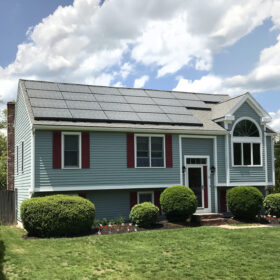Longi achieves 25.47% efficiency for gallium-doped p-type heterojunction solar cell
The result, confirmed by Germany’s Institute for Solar Energy Research Hamelin (ISFH), was achieved on a heterojunction solar cell based on an M6 wafer.
Semi-transparent organic photovoltaic filters for agrivoltaic greenhouses
Researchers in the United States have tested organic photovoltaic filters in a greenhouse hosting lettuce growth and have found the devices’ transmission spectra may help fine-tune the characteristics of the plant. They used transcriptomic analysis to assess the key modifications of the plants grown under the solar filters.
Canadian Solar launches 420W rooftop solar module with 21.5% efficiency
The new product is part of the company’s HiKu6 series based on 182mm wafers. Its temperature coefficient is 0.34% and its electrical characteristics are claimed to be compatible with the most common photovoltaic inverters thanks to values below 14A.
MIT scientists develop PV cleaning system based on electrostatic repulsion
Scientists from the Massachusetts Institute of Technology have developed a system that can be operated at a voltage of around 12V, with a 95% recovery rate for lost power after cleaning. The waterless system can be operated automatically via an electric motor.
Rocket Lab unveils space solar cell with 33.3% efficiency
The new device is based on an inverted metamorphic multi-junction (IMM) cell technology developed by Rocket Lab’s unit Solaero. The cell can be used in applications in the civil, military, and commercial space markets.
Polysilicon price reaches $39.3/kg — the highest since 2011
The price of polysilicon last week reached its highest level since 2011 and, according to Chinese module manufacturer JinkoSolar, there are no visible signs that it could drop this year, as predicted by several analysts.
LG exits solar module business
The Korean manufacturer said its solar module business will be closed by the end of June. It blamed uncertainties in the global solar industry for its decision.
Novel IBC solar cell architecture based on crystal photonics shows efficiency potential of 29.1%
Scientists in Germany designed a poly-Si on oxide (POLO) interdigitated back-contact (IBC) solar cell integrating photon crystals and found this architecture has the potential to reach a power conversion efficiency of over 28%, which would be 1% higher than the current practical limit set by the scientific community. They also found that by improving passivation, the efficiency may be raised up to 29.1%.
Flexible PV panels based on hyperconnected back-contact solar cells
US start-up mPower Technology is scaling up its flexible crystalline silicon solar module technology for spatial and terrestrial applications. The back-contact solar panels consist of micro-singulated silicon dies that are “hyper-interconnected” in series or in parallel. The devices have efficiency ranging from 22 to 23% depending on the size or applications.
Hydrogen under $3/kg may ensure affordable seasonal energy storage in the US
Researchers from the United States have investigated how fuel cells and electrolyzers may be able to operate under intermittent availability provided by both wind and solar and have found that an affordable hydrogen-based system for seasonal energy storage could be achieved at a hydrogen price lower than $3, produced from inexpensive renewable electricity at $0.02/kWh.

